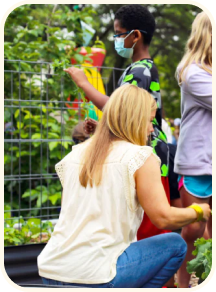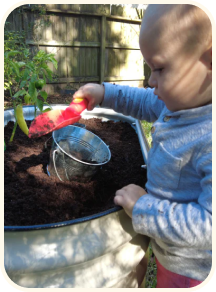Incorporating Vertical Elements: Trellises and Arbors in Garden Bed Designs
From Mesopotamia to Ancient Egypt, humanity has always devised gardens for reasons other than subsistence – whether it be for power, prestige, or personal achievement. Later, formal gardens were carefully cultivated as a reflection of divinity. While these splendid edifications are long gone, effaced by the passage of time, their contributions remain. Trellises and arbors are all vertical gardening structures that provide a multitude of practical purposes beyond elevating the attractiveness of a garden. Trellises are rectangular grids used to support vining plants; arbors are more akin to walkways with a roof.

Using Trellises Arbors to Enhance Garden Space
Whether you’re interested in cultivating a lavish bouquet of roses, looking for additional space to grow vegetables, or seeking ways to enhance a fence, trellises and arbors can be used to brighten the garden space. In areas with narrow spaces or barren areas, vertical supports can lend a dimension of architectural interest. Unlike pergolas, arbors are less intensive and often incorporate trellises or lattice-like gridwork that intertwine with vegetative growth. Below are a few tips to keep in mind when landscaping your yard or garden.
- Arbors are more permanent. Though some arbors are without ornamentation, the arched structure of arbors shines when overlaid with greenery, creating interesting contrasts and textures. Keep in mind that they are more permanent than trellises, so make sure you fully consider its purpose before you anchor it to place. Arbors are commonly used as garden entryways, a focal point, or an entrance to an outdoor sitting area. An alternative is an arched trellis system, which replicates the arch-like design of an arbor while also making removal and reinstallation a breeze.
- Trellises pair well with garden beds. Raised garden beds go well with trellises, as they allow you to maximize the growing space. Common vegetables grown on trellises include tomatoes, cucumbers, climbing beans, peas, and small melons. Keep your plants disease free by training vining varieties to climb on trellises to help improve air circulation.
- Consider the material. If you’re growing heavier varieties, it is important to select materials that will hold up. Unless it’s pressure treated or painted, most woods are susceptible to rot. Cattle panel trellises, though functional and relatively inexpensive, are not very appealing or decorative. Vego Garden’s wall trellis, designed to seamlessly integrate with raised garden beds of all configurations, is built to last while retaining ornamental value. It’s sturdy enough to handle heavier plants, and its rustproof connectors offer convenient installation without touching the soil.
- Integrate your arbor with the landscape. One of the everlasting rules of styling is to ensure harmony. Garish colors and textures will clash, incurring the ire of many a visitor to your garden. Even if it’s just you, an emphasis on craftsmanship can make a big difference. Arbors with a white finish blend nicely with a cottage garden setting, but if you’re looking for a more rustic backdrop, iron or wooden arbors may be more appropriate.

Design Ideas and Tips
When designing your garden layout, it’s important to consider the surrounding natural environment. An understated benefit of vertical gardens is its ecological benefit – a wall of greenery can form a symbiotic relationship with nature that combats climate change. Society still has a long way to go in constructing green facades, but it takes only a little imagination to utilize vertical elements in your own garden.
1. Add a Timeless Elegance with Cascading Blooms
The languid branches of the wisteria plant, laden with frothy lilac blooms, have long captured the imagination of poets. Now you can incorporate its timeless elegance into your garden with the help of trellises and arbors. When growing wisteria, passionflower, and other massive vines, there are a few things to note. Select non-invasive varieties of wisteria to prevent it from encroaching upon other plants or colonizing the rooftop. Choose sturdy trellises over flimsy DIY trellises, which can topple over.
2. Attach Trellises to the Perimeter
A trellis can be a great way to define space. For a truly dazzling effect, utilize a series of raised garden beds and arched walkways to delineate garden paths and establish verdant green zones. When layered with ornamental grasses and interestingly colored flowers, these artistic elements offset the utilitarian structures of vegetable gardens.
3. Add Rustic Charm with a Pea or Bean Makeshift Trellis
Foraged materials such as bamboo or discarded piles of branches can be recycled into makeshift trellises for your pea or bean plants. Because of the annual nature of these crops, you do not need to worry about those structures decaying or disintegrating. Although many are arranged into an upright pyramid shape, they can also be curved into a simple archway or suspended and then strung with twine, similar to a loom.
4. Memorialize your Flowers with Gothic Metal Trellises
We often lament the evanescence of youth, which symbolically corresponds with the wilt and decay of flowers. With a dramatic goth trellis, your garden will be lovely regardless of the season, even if all else has gone to gray. Replete with gothic-style finials, these metal structures embody the dramatic curve of Romanesque structures, harkening back to medieval times. Enchant your guests with glorious profusions of roses – the quintessential flower of the Victorian era – with a staying power that remains to the present day.
5. Pair it with a Planter
Many design ideas online appear prohibitive and costly to the average gardener. However, the beauty of gardening is that it is accessible to gardeners of all skillsets. One of the easiest ways to add dimension to your space is to attach your trellis to the side of a planter or garden bed.
6. Substitute Fence for Trellis
The lattice-like framework of a trellis can be used to partition a patio. Use trellises to partition off areas of the yard to create a secluded backyard retreat. Unlike fences, trellises are less obtrusive, creating a bright and airy feeling to the outdoors. Flowering vines are lovely, but foliage can offer complementary contrast: bronze-colored leaves cascading over a forest green veneer takes on a quaint Old-World charm.






























Leave a comment